Bayesian Model Calibration
An Elastic Approach
J. Derek Tucker, Statistical Sciences
2023-01-24

Sandia National Laboratories
- Department of Energy National Lab
- 14,000 Staff across 7 Locations
- Two Statistics Departments
- 30 Full Time Staff, 4 Post-Docs, 10 year round interns

Outline
- Introduction
- Functional Data Analysis
- Elastic Metric
- Bayesian Model Calibration
- Results
- Simulation
- Sandia Z-Machine
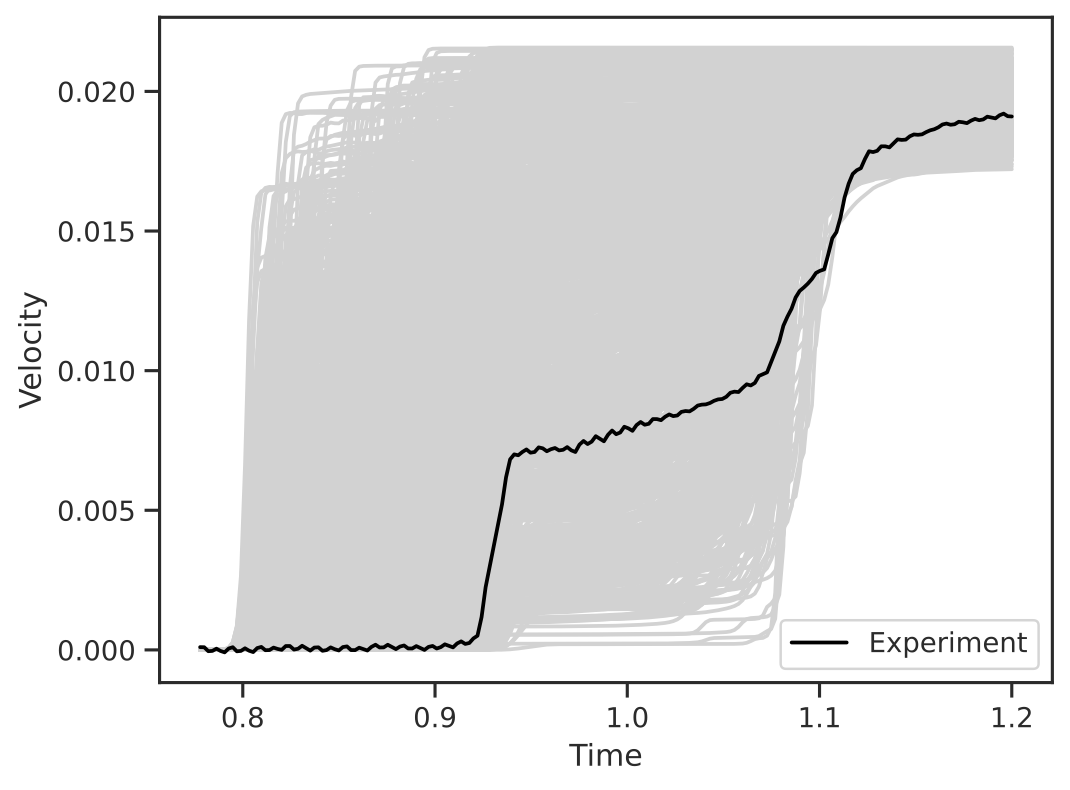
Introduction
- Question: How can we model functions
- Can we use the functions to classify diseases?
- Can we use them as predictors in a regression model?
- Can we calibrate a computer model?

- One problem occurs when performing these types of analysis is that functional data can contain variability in time (x-direction) and amplitude (y-direction)
- How do we characterize and utilize this variability in the models that are constructed from functional data?
Components of Function Variability
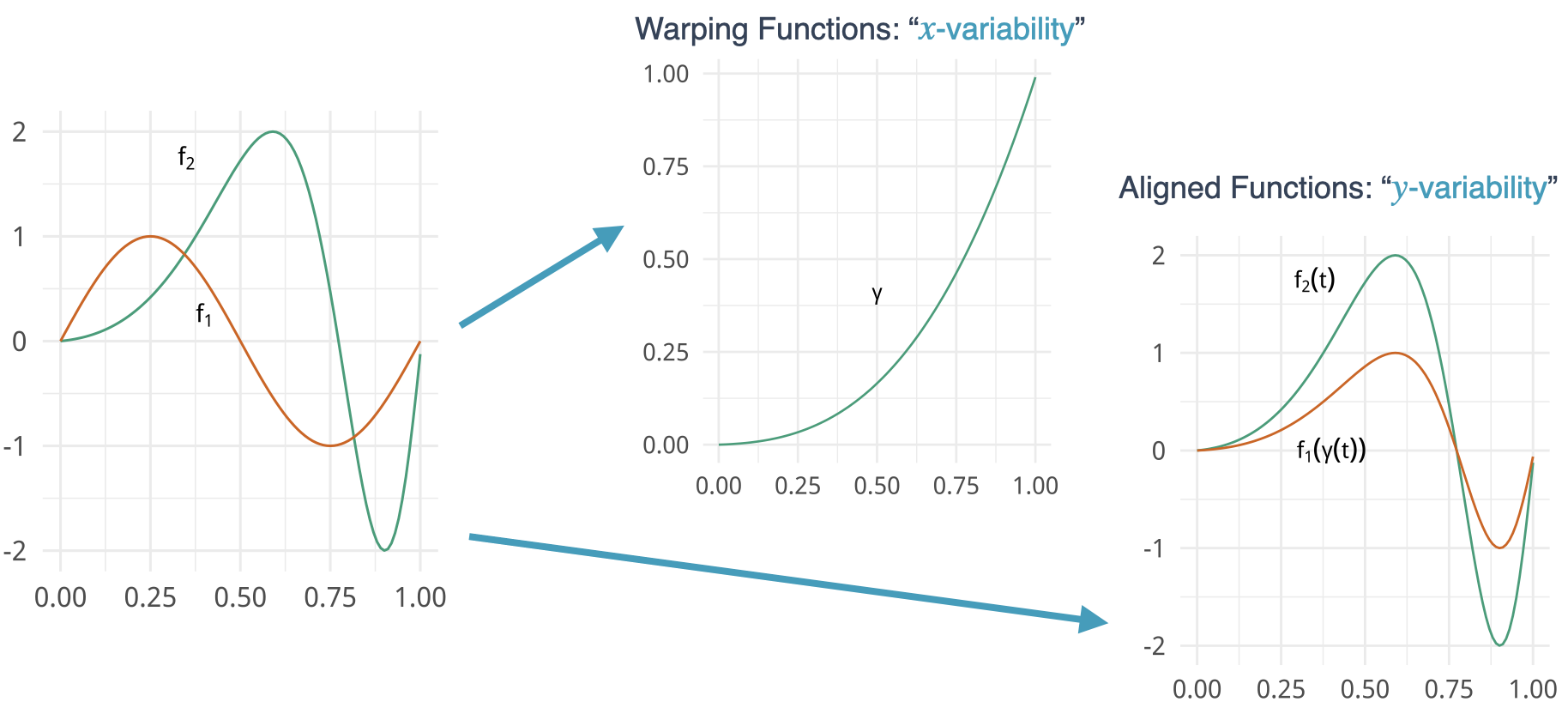
Functional Data Analysis
- Let \(f\) be a real valued-function with the domain \([0,1]\), can be extended to any domain
- Only functions that are absolutely continuous on \([0,1]\) will be considered
- Let \(\Gamma\) be the group of all warping functions \[ \Gamma = \{\gamma:[0,1]\rightarrow[0,1]|\gamma(0)=0,\gamma(1)=1,~\gamma \mbox{ is a diffeo}\} \]
- It acts on the function space by composition \[(f,\gamma) = f\circ\gamma\]
- It is common to use the following objective function for alignment \[\min_{\gamma\in\Gamma}\|f_1\circ\gamma-f_2\|\]
- Note: It is not a distance function since it is not symmetric.
Elastic Distance (Fisher-Rao)
Define the Square Root Velocity Function \[q:[0,1]\rightarrow\mathbb{R}^1,~q(t)=sign(\dot{f}(t))\sqrt{|\dot{f}(t)|}\] Fisher Rao Distance is \(\mathbb{L}^2\) in SRVF space \[d_a(f_1,f_2) = \inf_\gamma\|(q_1\circ\gamma)\sqrt{\dot{\gamma}}-q_2\|\] Distance is a proper distance
Can compute distance on warping functions (how much alignment) \[d_p(\gamma) = \arccos\left(\int_0^1\sqrt{\dot{\gamma}}\,dt\right)\] 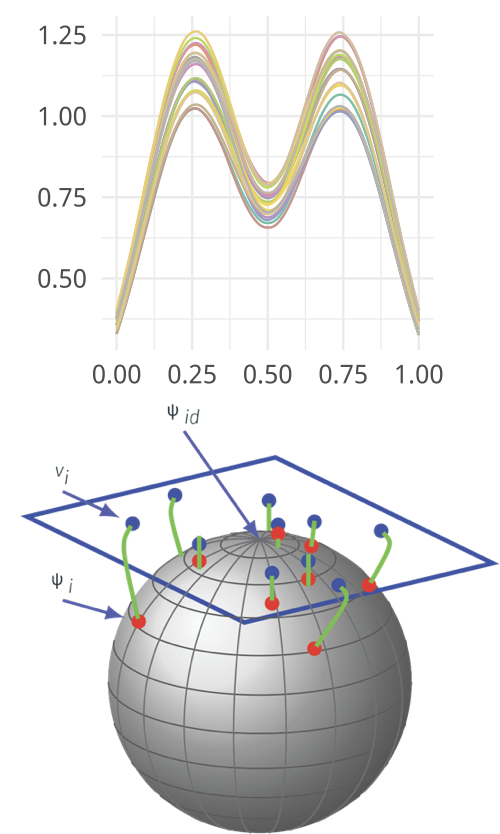
Bayesian Model Calibration

- We wish to calibrate a computer model with parameters \(\theta\) to an experiment
- Can compute computer model (simulations) over wide range of \(\theta\)
- The data is functional in nature and has phase and amplitude variability
- Utilize elastic metrics in a Bayesian Model Calibration Framework
Elastic Bayesian Model Calibration
- Decompose observation into aligned functions and warping functions \[y_i^E(t) = y_i^E(t^*)\circ\gamma_i^E(t)\]
- and decompose the simulations \[y^M(t,x_j) = y^M(t^*,x_j)\circ\gamma^M(t,x_j)\]
- To facilitate modeling, we transform the warping functions into shooting vector space with \[v_i^E = \exp_\psi^{-1}\left(\sqrt{\dot{\gamma}_i^E}\right)\] \[v^M(x) = \exp_\psi^{-1}\left(\sqrt{\dot{\gamma}^M(x)}\right)\]
Elastic Bayesian Model Calibration
- Calibrate the aligned data and shooting vectors using the following model \[y^E(t^*) = y^M(t^*,\theta)+\delta_y(t^*)+\epsilon_y(t^*),~\epsilon_y(t^*)\sim\mathcal{N}(0,\sigma_y^2I)\] \[v^E = v^M(\theta) + \delta_v + \epsilon_v,~\epsilon_v\sim\mathcal{N}(0,\sigma_v^2I)\]
- Note: The shooting vector will be identity if the data is aligned to the observation (experiment)
- Then if \(\theta\) is calibrated correctly the shooting vectors will be identity
MCMC Sampling
For each experiment the likelihood is a Gaussian likelihood
- We fit an emulator (Gaussian Process, BASS, MARS) to the simulated data
- Uniform priors on \(\theta\)
- Sample posterior using delayed rejection adaptive Metropolis Hastings
- Implemented using Impala (LANL) or Dakota (SNL) calibration framework
Simulation
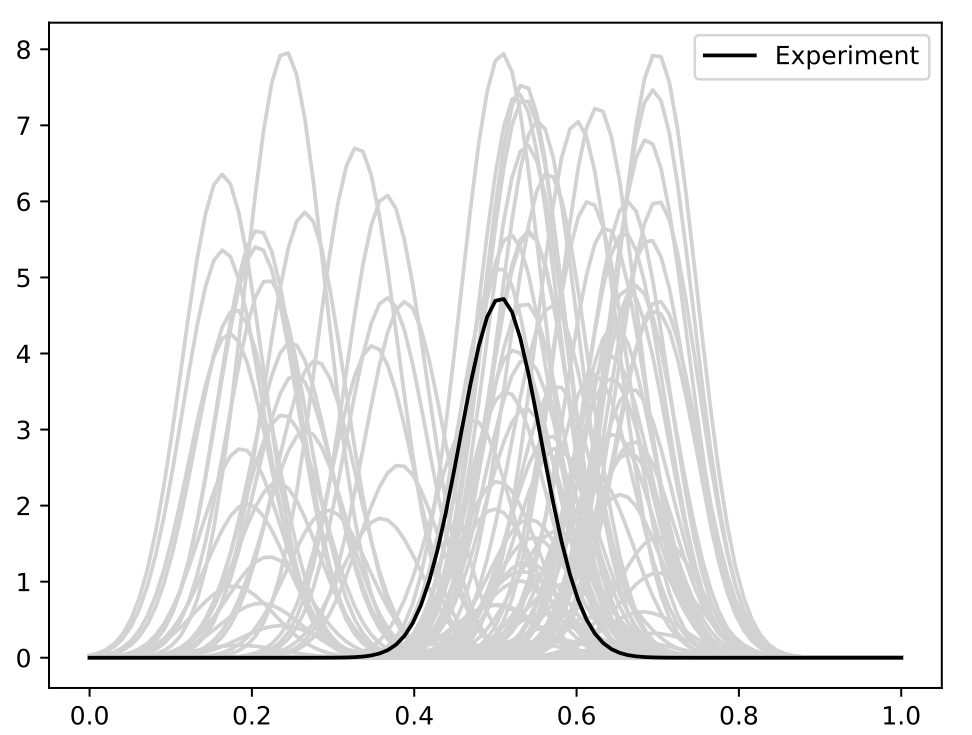
- Simulation study where each function is parameterized Gaussian pdf
- A set of 100 functions were simulated with \(\theta_1,\theta_2\) being drawn from a \(U[0,1]\)
- Third nuisance parameter \(\theta_3\) also drawn from \(U[0,1]\)
\[f_i(t) = \frac{\theta_1}{0.05\sqrt{2\pi}}\exp\left(-\frac{1}{2}\left(\frac{t-(\sin(2\pi \theta_0^2)/4-\theta_0/10+0.5)}{0.05}\right)^2\right)\]
Calibration
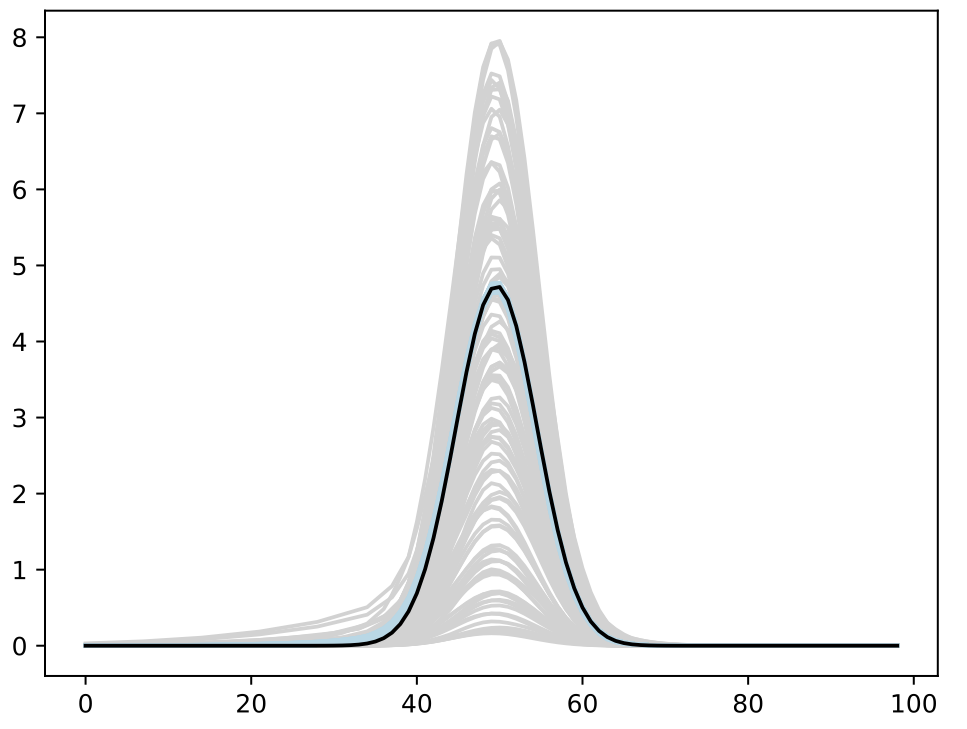
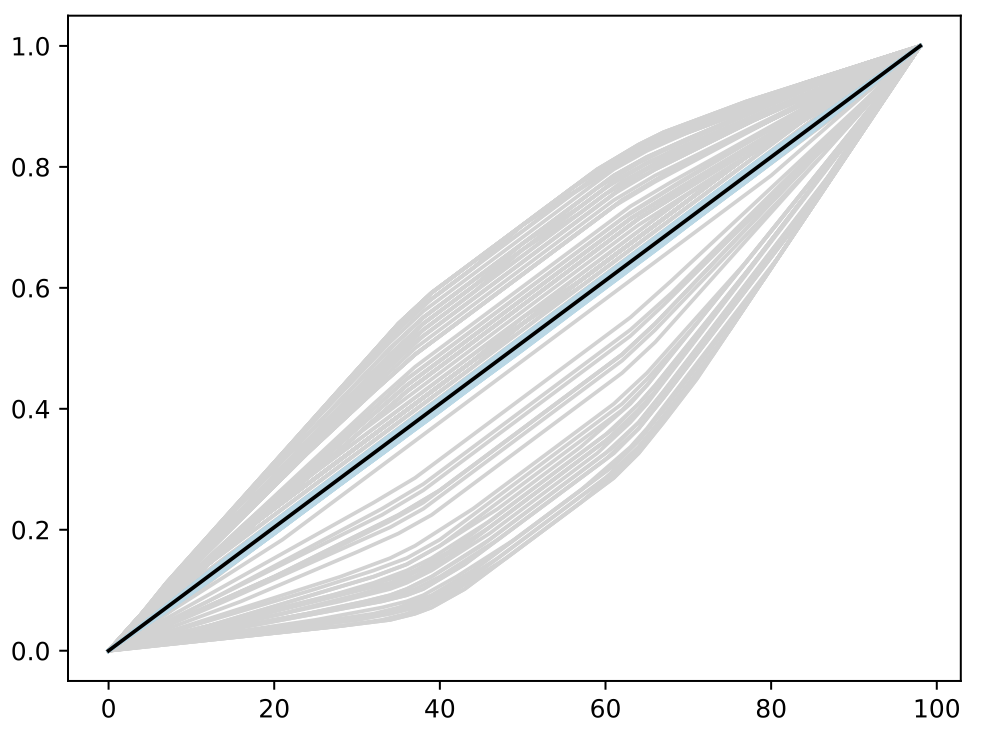
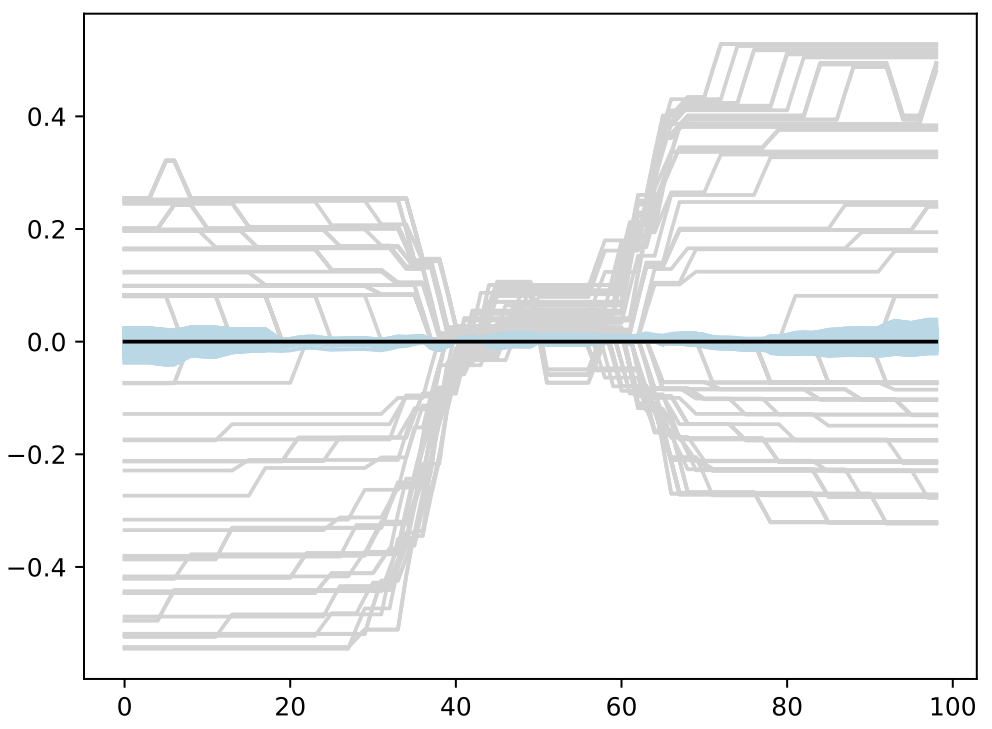
- Trained BASS Emulator on Aligned Functions and Shooting Vectors (using elastic fPCA)
- Calibrated using framework with tempering and adaptive MCMC
- Blue shows draws from posterior distribution at 95% credible interval
Calibration
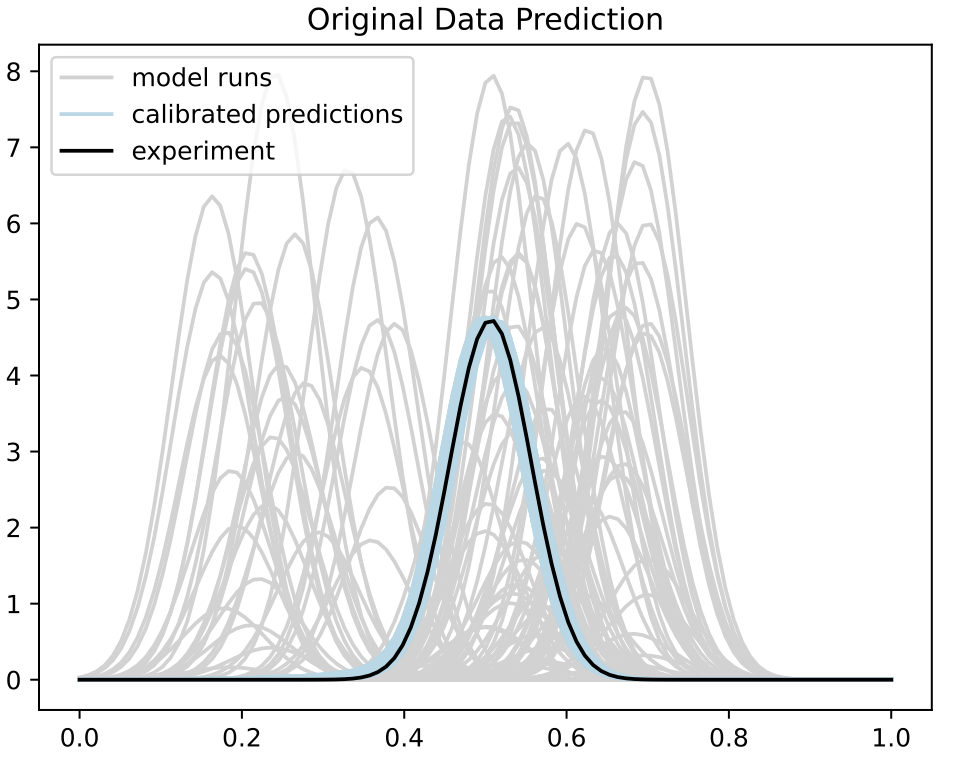

Comparison to Standard Method
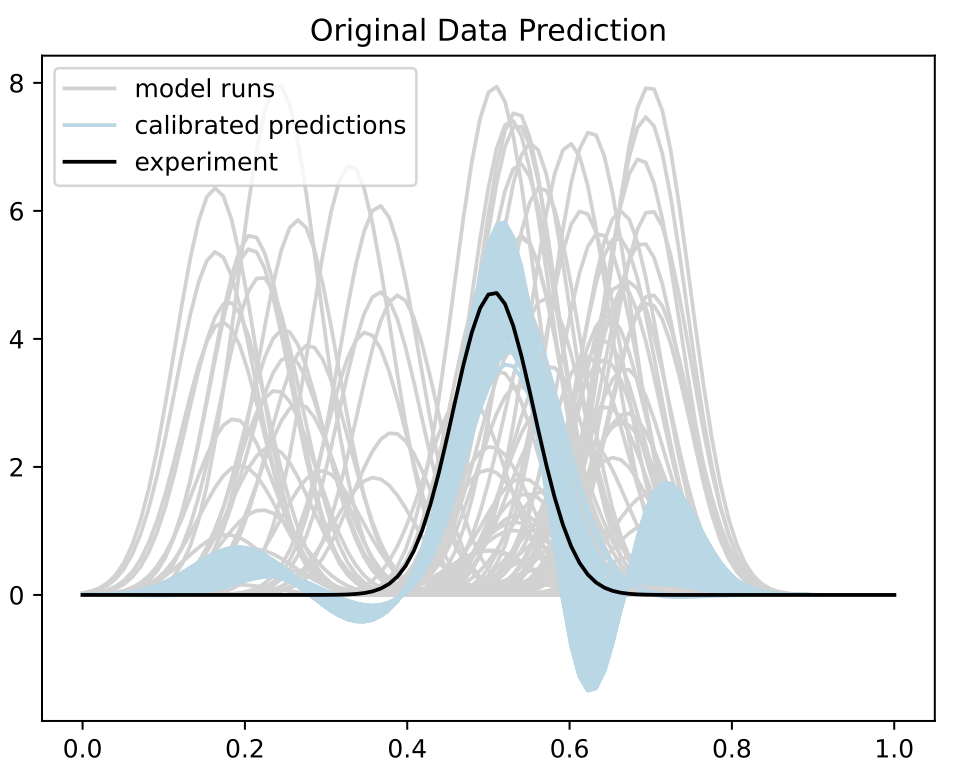
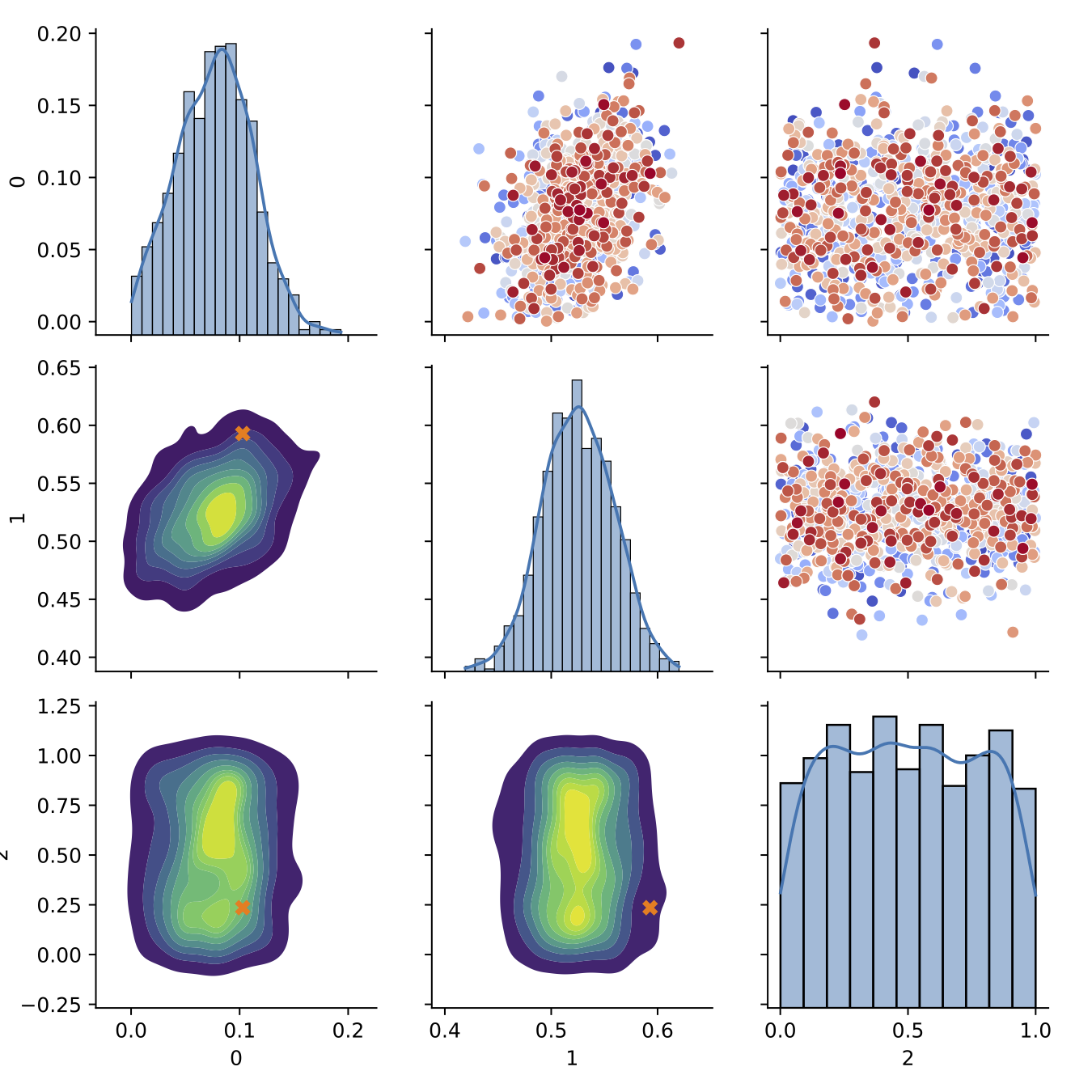
Simulation with Discrepancy
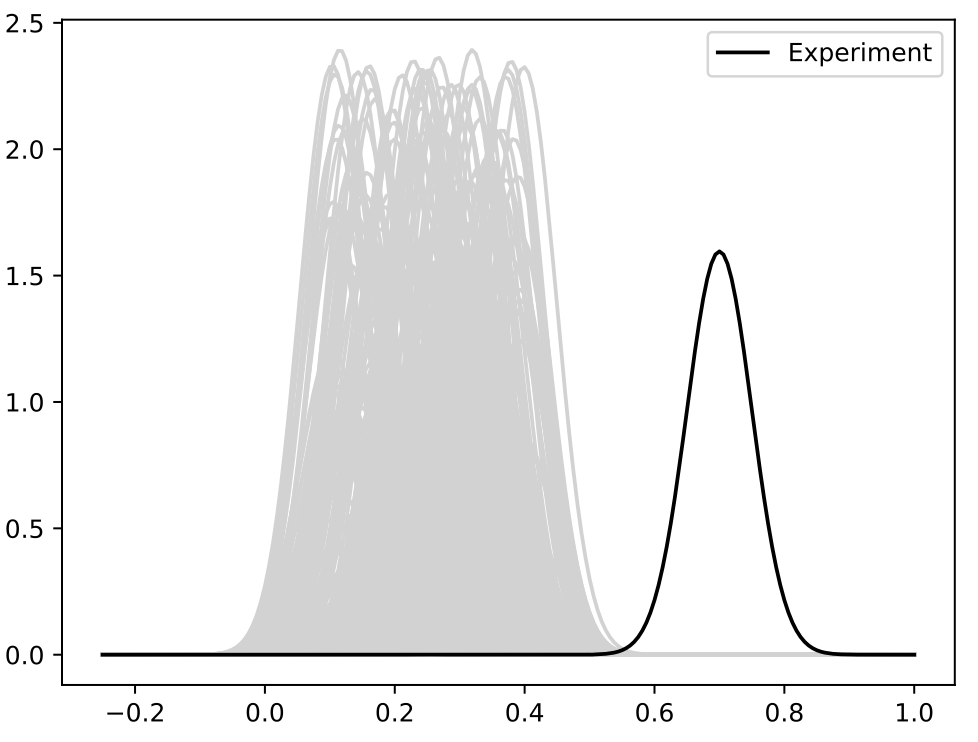
- Repeat same simulation model with with the experiment having a timing discrepancy
- Discrepancy modeling with basis functions in shooting vector space
Calibration
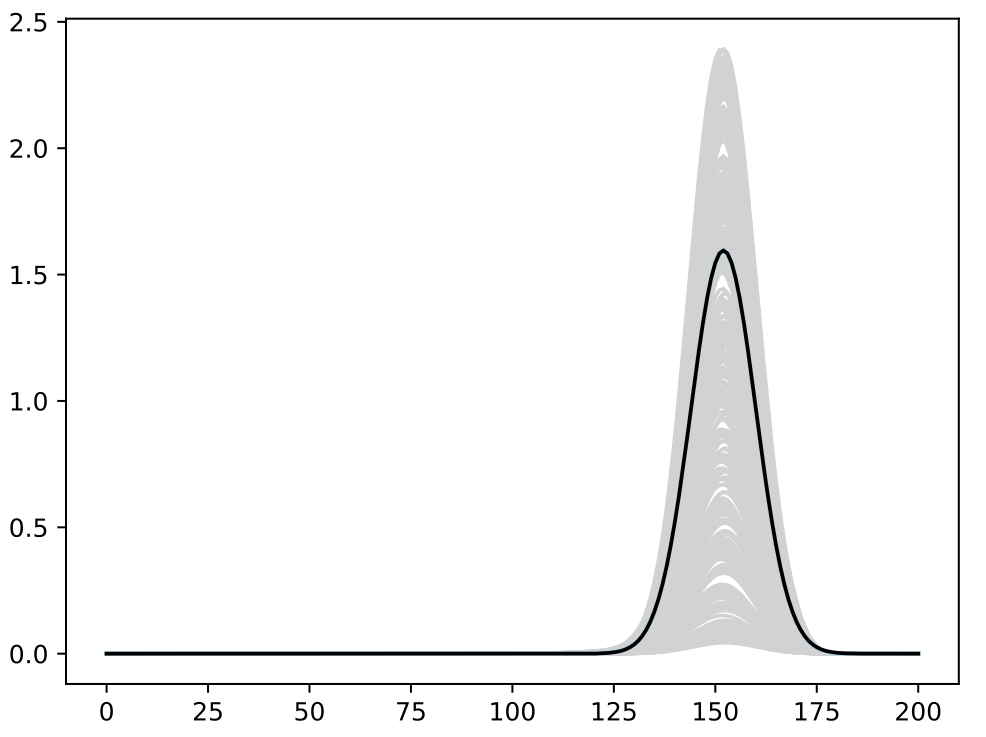

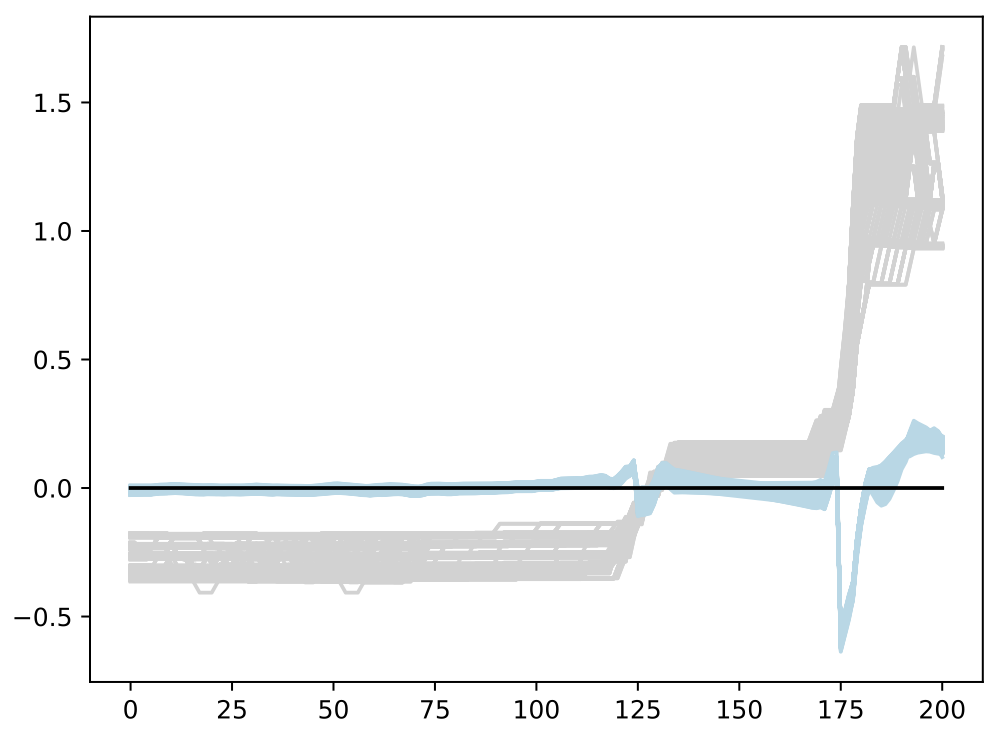
- Trained BASS Emulator on Aligned Functions and Shooting Vectors (using elastic fPCA)
- Calibrated using framework with tempering and adaptive MCMC
- Blue shows draws from posterior distribution at 95% credible interval
Calibration
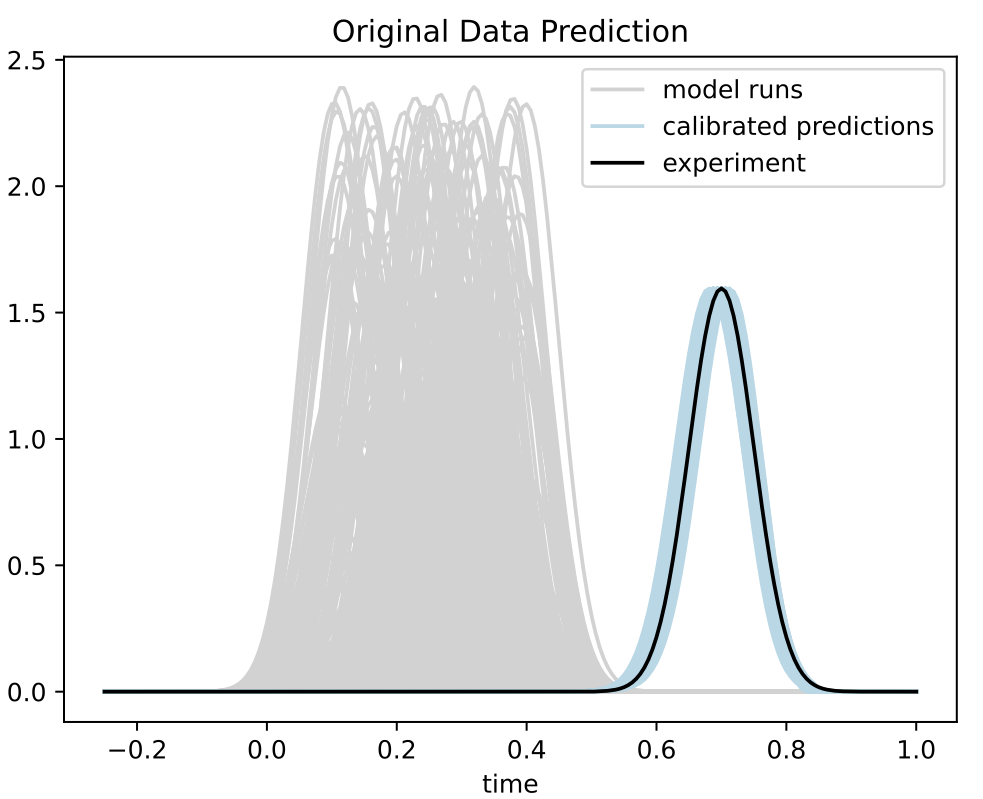

Comparison to Standard Method
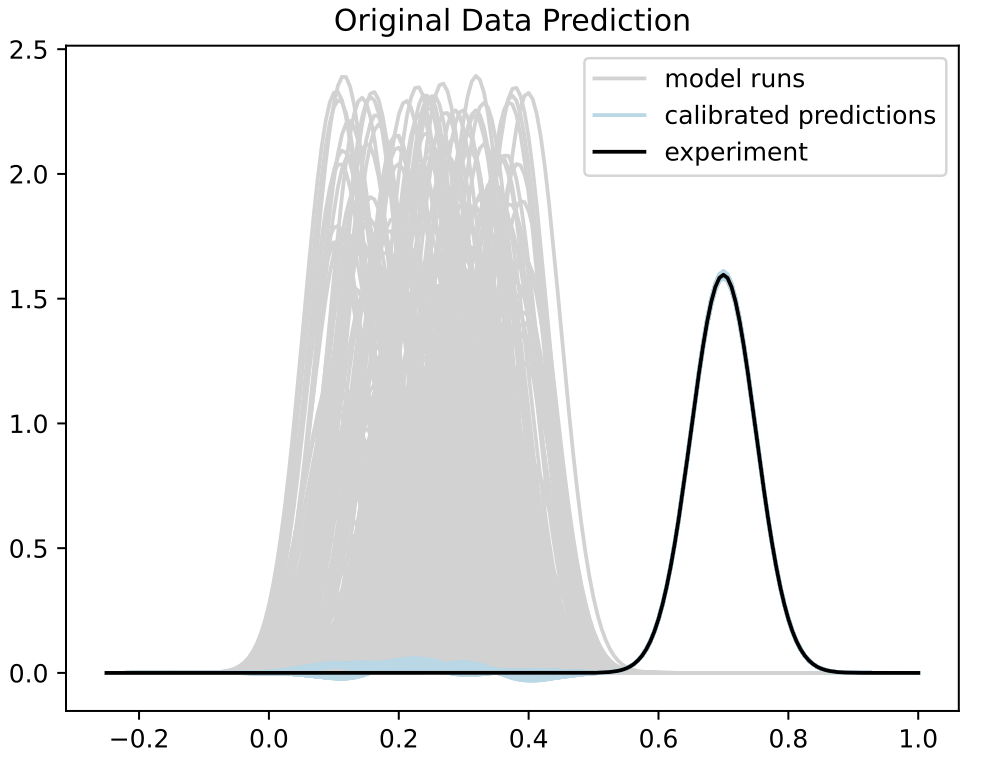

Z-Machine
Calibration of Tantalum

- Calibration equation of state of tantalum generated with pulse magnetic fields
- Estimate the parameters describing the compressibility (relationship between pressure and density) to understand extreme pressures
- Conducted using Sandia Z-machine, a pulse power drive reactor
Calibration
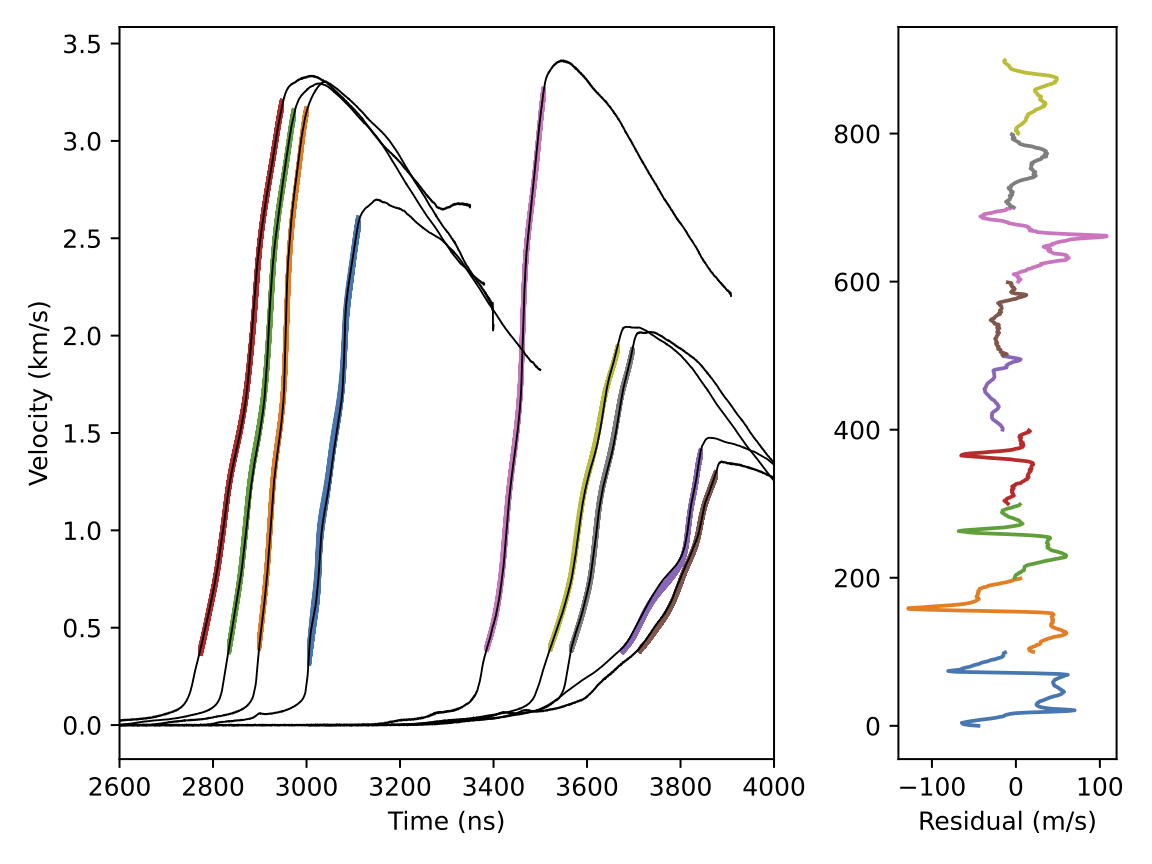
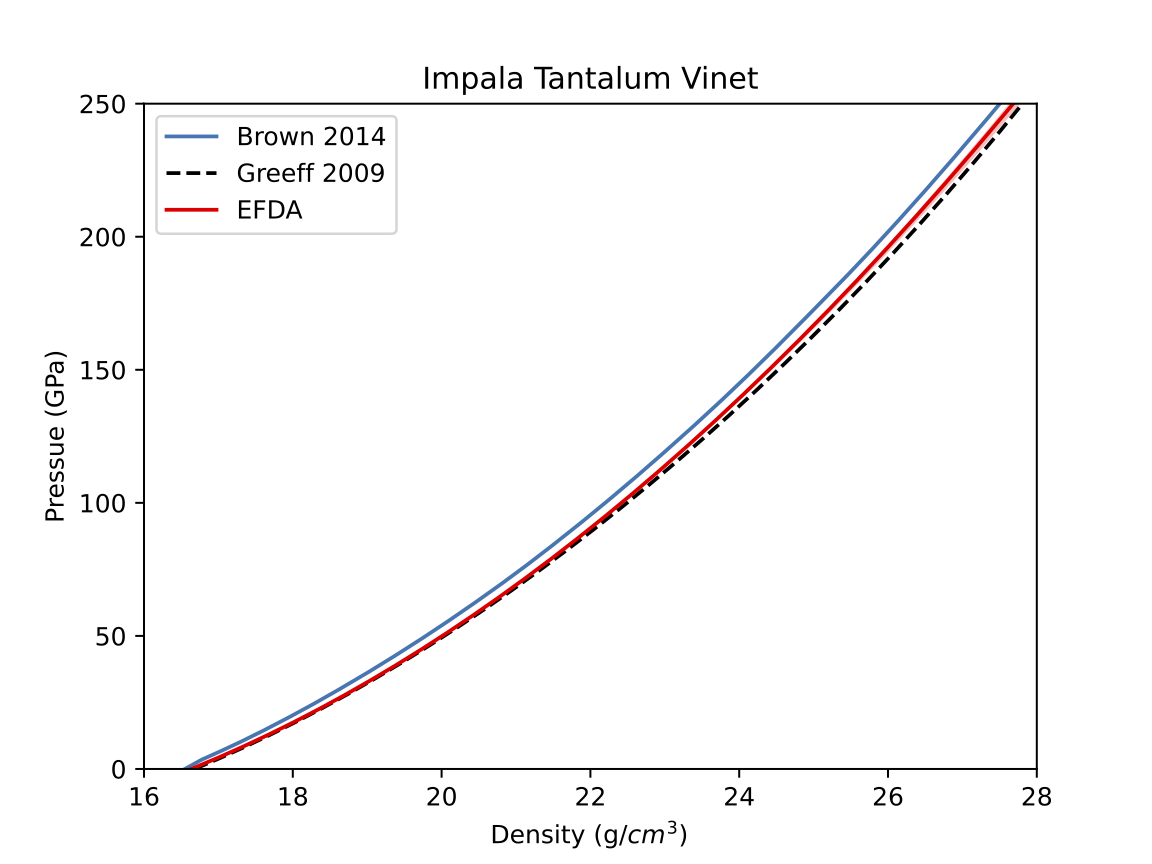
- We have a good fit between experiment and simulation
- Better residuals over standard calibration method
Tantalum Parameters
- With the elastic method we have tighter posteriors over previous methods
- Additionally, scientists at Z have confirmed the parameters conform more to physical understanding of the material
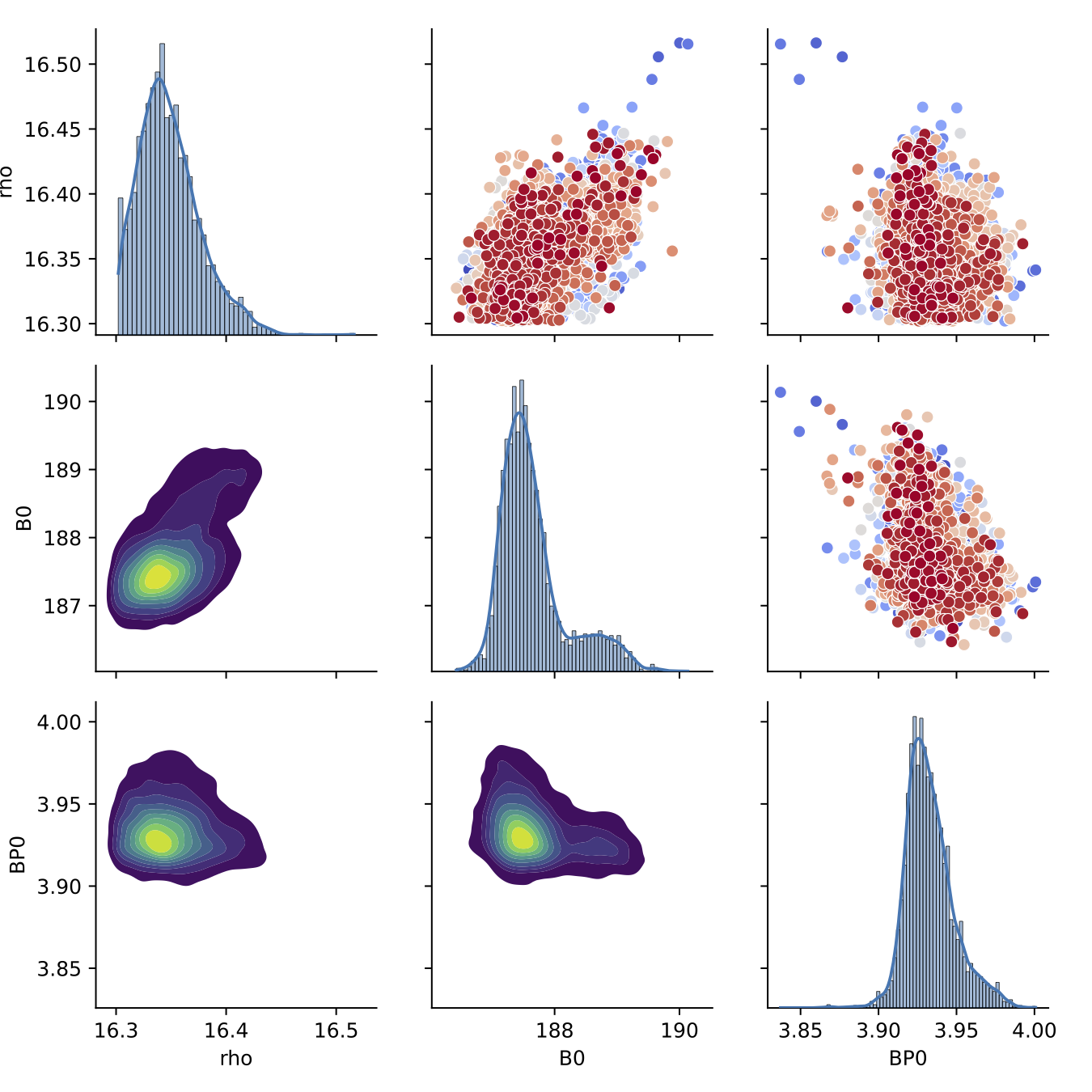
Summary
- Functional metrics provide a global measure of the difference of a function in terms of amplitude and phase
- Integrated elastic functional metrics into Bayesian Model Calibration framework utilizing aligned data and shooting vector representation
- Demonstrated ability on simulated and tantalum equation of state calibration problems
- Future Work
- Additional testing on real world examples
Questions?
jdtuck@sandia.gov